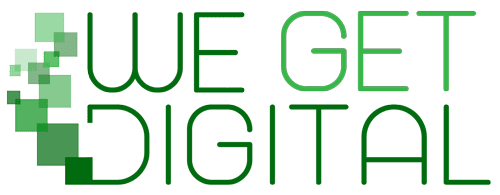
Planning On Page
SEO Optimisation
Your business Website is probably one of the most important tools in your armoury for marketing your business effectively. Planning on page SEO optimisation for your website could make the difference between getting clients/customers or not! That straight.
If you get your site and SEO optimisation set up correctly then you will be able to prove to Google that you are the best at what you do AND exactly what it is you do.
With our comprehensive service for planning on page SEO optimisation, we take a deep dive into your business and map out exactly how your site needs to be optimised.
KEYWORD RESEARCH
SEO AUDIT
CORRECT META
OPTIMISED COPY
OPTIMISED IMAGES
Planning SEO optimisation needs great coffee/tea & amazing biscuits!
Planning for on-page SEO optimisation is a crucial step for enhancing your website’s visibility and ranking on search engines. Here’s a friendly guide to help you get started:
Keyword Research: Start by identifying the keywords that are relevant to your content and business. Use tools like Google Keyword Planner or SEMrush for comprehensive keyword research. Remember to focus on long-tail keywords as they’re often less competitive and more targeted.
Optimise Your Titles and Meta Descriptions: Ensure your page titles and meta descriptions are compelling and include your primary keywords. This not only helps with SEO but also encourages users to click on your link when it appears in search results.
High-Quality Content: Create content that’s informative, engaging, and valuable to your audience. Make sure it’s well-written (in UK English, of course!) and incorporates your target keywords naturally.
Use Header Tags Effectively: Organize your content with header tags (H1, H2, H3, etc.). Your main title should be H1, and subsequent subheadings H2, H3, and so on. This structure is not only good for SEO but also improves readability.
Optimise Images: Use relevant images and optimize them by compressing the file size and adding descriptive alt text with keywords. This improves page loading speed and helps visually impaired users understand the image content.
Internal Linking: Link to other pages on your website where relevant. This encourages users to spend more time on your site and helps search engines understand the structure of your website.
Mobile Responsiveness: Ensure your website is mobile-friendly. With more people using mobile devices to browse the internet, this is a key factor for SEO.
Page Load Speed: Work on reducing your website’s loading time. Faster-loading pages are favored by search engines and improve the user experience.
URL Structure: Use a clear and descriptive URL structure. Include keywords and avoid lengthy URLs.
Social Sharing Buttons: Include social media sharing buttons to encourage users to share your content. This can indirectly improve your SEO by increasing your content’s reach and potential backlinks.
Remember, SEO is an ongoing process.
Find out what's going on with the SEO on your website - book a free SEO audit
Creative Power For SEO
Turbocharge SEO
Unleash your brand’s creative power to turbocharge SEO, captivating both search engines and audiences with innovative and strategic content.
Transform Your SEO
By harnessing creative power, you can transform your SEO approach, blending engaging, original content with smart keyword placement to not only rank higher in search results but also to resonate deeply with your target audience.
Loyal Customers
This blend of creativity and SEO expertise is the key to building a strong online presence, driving organic traffic, and turning visitors into loyal customers.


Understanding SEO
Understanding SEO, or Search Engine Optimisation, is essentially about making your website more visible and attractive to search engines like Google. It’s a bit like tidying up your shop window and putting your best products on display, so people walking by can’t help but stop and look.
Here’s the kicker: SEO isn’t just about using the right keywords, although they’re super important. It’s also about creating quality content that answers people’s questions, making your website easy and enjoyable to navigate, and ensuring it loads quickly. Think of Google as a matchmaker, trying to connect users with the websites that best answer their queries. Your job is to make your site the most appealing match.
It’s a continuous game, though. Search engines frequently update their algorithms, so what works today might need tweaking tomorrow. It’s all about staying on your toes and keeping your website in tip-top shape.
8 Top Tips for on page SEO Optimisation
This might be a repeat of above… but in case you missed it we can stress how important it is for making sure your website not only looks great but also ranks well in search engines. Here we go:
Keyword Research: Before anything else, know what search terms your target audience uses. Use tools like Google Keyword Planner or SEMrush to find relevant keywords. Long-tail keywords can be especially beneficial for targeting specific queries.
High-Quality Content: Content is king in SEO. Ensure your website has well-written, informative, and engaging content that adds value to your readers. Regularly updating your content can also help keep your site fresh and more appealing to search engines.
Title Tags & Meta Descriptions: Each page should have a unique title tag and meta description that includes relevant keywords. This not only helps with SEO but also improves click-through rates from search engine results pages.
Header Tags: Use header tags (H1, H2, H3, etc.) to structure your content. Your main title should be H1, and the rest of your content should be broken down into H2s and H3s as subheadings.
Image Optimisation: Ensure that all images on your site are optimised for the web. This includes using descriptive file names, alt tags, and compressing images for faster loading times.
URL Structure: Keep your URLs short, clean, and descriptive. Include keywords where appropriate, but avoid stuffing them.
Internal Linking: Create links to other pages within your website. This not only helps with SEO but also keeps visitors on your site longer.
Mobile Responsiveness: With more people using mobile devices to browse the web, ensure your site is mobile-friendly. Google’s Mobile-Friendly Test tool can help you see if your site meets the criteria.
Remember, SEO is an ongoing process, not a one-time setup. Regularly reviewing and updating your on-page SEO strategy can lead to significant improvements in your site’s search engine rankings. Keep an eye on the latest trends and algorithm updates for the best results! 🚀🔍
Images – Best Practice
Understand the three top things you need to do in order to help with your SEO image indexing on your website. Just a short video to help get it right.
Great SEO Information
Access and download a really useful ebook that we have written to help you do your own SEO. Written in a jargon-free manner this will really help.
Get Your Website Right
Fail to plan, plan to fail! Cliche but true. This planner will give you some really great ideas about what you need to consider when building a website.
